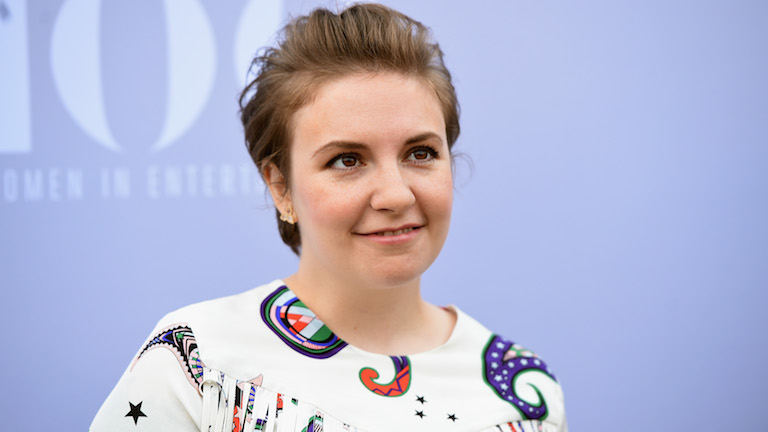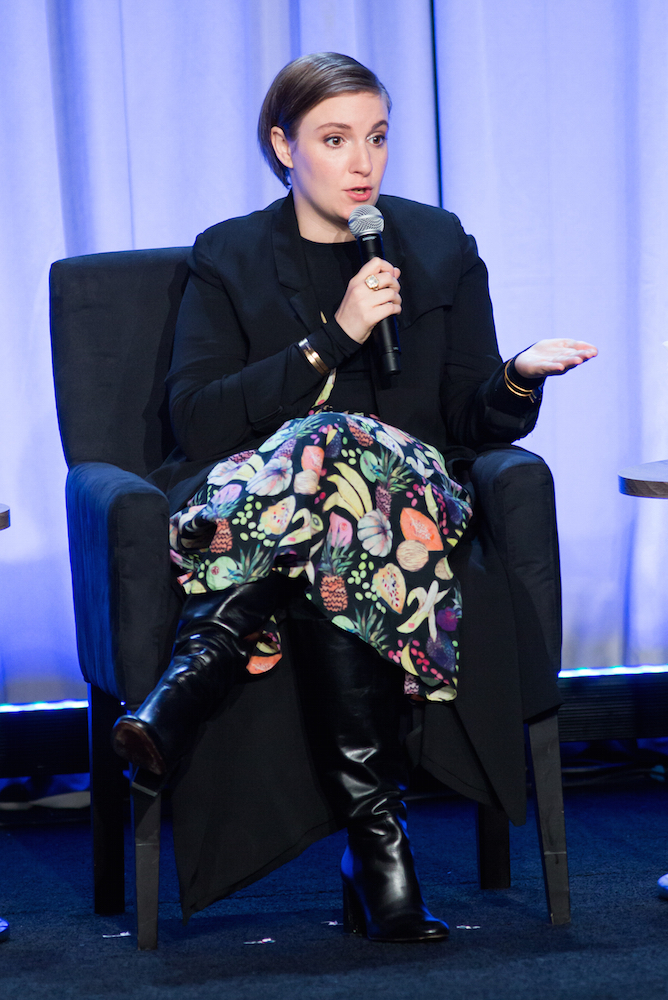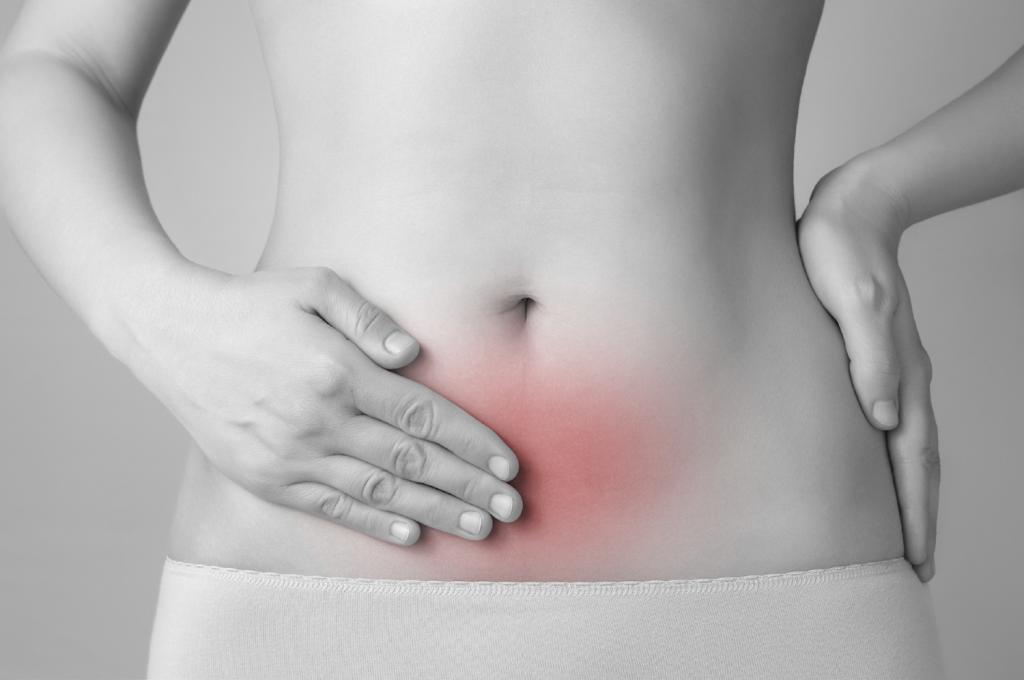Endometriosis affects one in ten women and Girls star and feminist activist Lena Dunham, who has it was rushed to hospital following a ruptured ovarian cyst at the weekend. Dr. Xavier Santamaria, fertility specialist of IVI Fertility has what you need to know
We’re happy to hear that Lena Dunham, 29, is home safe and recovering after undergoing surgery for a ruptured ovarian cyst this past Saturday. The Girls creator suffers from endometriosis, a chronic condition that affects about 1 in 10 women. Dunham’s rep, Cindi Berger, released a statement on Saturday:
‘Lena Dunham has been very public with her personal bouts with endometriosis. This morning, she suffered from an ovarian cyst rupture and has been taken to the hospital. Lena will be undergoing surgery at an undisclosed hospital. We thank you for your understanding and hope that Lena’s privacy will be respected.’
Dunham followed up with a message posted to her Instagram last night:
‘Thank you so much for the love. I’m safely out of the hospital and recuperating. Your well wishes mean the world. I can’t wait to be up and active, and to show my thanks.’
This all comes as an unfortunate result of a ‘rough patch‘ Dunham described in an open post to the public last month.
ENDOMETRIOSIS: WHAT YOU NEED TO KNOW

Endometriosis is a common condition which affects 10 per cent of women worldwide, and is prevalent in 30-50 per cent of women who suffer from infertility. However, the cause of endometriosis is unknown and at present there is no definite cure.
Despite the fact that it is such a common condition, (the second most common gynaecological condition in the UK), there is often much confusion over what the condition actually is, the warning signs you should look out for, and if/how the condition can be treated.
What is endometriosis?
Dr Santamaria says: ‘Endometriosis is the name given to the condition where cells like the ones in the lining of the womb (the endometrium) are found elsewhere in the body. These tissues behave in a similar way to the tissue that is found in the lining of the womb, mimicking the menstrual process. Each month these cells build up and then break down and bleed. Unlike a period, this blood has no way to escape.
Endometriosis has the potential to affect all women and girls of a childbearing age
Endometriosis is a chronic, debilitating, and often painful condition, which can also lead to infertility, fatigue and bowel and bladder problems. This condition affects around 2 million women in the UK, and can manifest itself in a range of symptoms, varying from person to person. Endometriosis has the potential to affect all women and girls of a childbearing age.’
What causes it?
Dr Santamaria says: ‘Unfortunately, there is still some confusion throughout the medical world as to what causes endometriosis. However, the most widely accepted theory is retrograde menstruation. This is where the womb lining doesn’t leave the body properly during a period and embeds itself on the organs of the pelvis.
Despite this theory being the most popular, endometriosis can still occur in women who have had a hysterectomy, which cannot be explained by this cause.
We also know that endometriosis can be more common in the sisters and mothers of women who have endometriosis and therefore it is sometimes believed to have a genetic background.
Other potential causes of endometriosis have also been suggested to be the weakness of a woman’s immune system, environmental causes and metaplasia (in which cells can change into endometrial cells to adapt to their environment). However, none of these theories are a definite cause of Endometriosis and therefore its exact cause remains unknown.’
What are the main symptoms?
Dr Santamaria says: ‘The symptoms associated with endometriosis will vary from woman to woman, and some people will also suffer more severe symptoms than others. Generally speaking though, the most common symptoms experienced by women suffering from endometriosis include:
- painful periods or heavy periods.
- pain in the lower abdomen (tummy), pelvis or lower back.
- pain during and after sex.
- bleeding between periods.
- difficulty getting pregnant.
Most women with endometriosis experience pain in the area between their hips and the tops of their legs. In some cases, this pain can be relentless and without respite.
In addition to the most common symptoms listed above, women suffering from endometriosis can also find themselves susceptible to some more serious health problems such as, persistent exhaustion and tiredness, discomfort when going to the toilet, bleeding from the back passage (rectum), or coughing blood.
It is interesting to note that the severity of symptoms is dependent on where in a woman’s body the abnormal tissue is, as opposed to the amount of tissue found.’
How can endometriosis affect fertility?
Dr Santamaria says: ‘Anatomical distortion and adhesions caused by endometriosis reduces the chance of natural conception. This is a more serious problem in those who suffer severe endometriosis, as the increased number of adhesions means there is higher possibility the egg will get trapped and prevented from getting down the Fallopian tube. It is particularly significant if the ovary is wrapped in adhesions or if the Pouch of Douglas (the lowest area of the peritoneal cavity) is covered by adhesions.
‘Endometriosis is classified into minimal, mild, moderate and severe using the American Fertility Society Revised Classification of Endometriosis (AFS) score, and this score helps dictate the chance of conceiving naturally.’
What should you do if you think you may have endometriosis?
Dr Santamaria says: ‘If you are suffering from any of the symptoms associated with endometriosis then in the first instance it is advisable that you book in to see your GP who will often refer you to gynecologist.
The average length of time it takes to diagnose is 7.5 years from the initial symptoms
However, it is often difficult to diagnose the condition, because the symptoms can vary considerably, and many other conditions can cause similar symptoms. Due to this, the average length of time it takes to diagnose is 7.5 years from the initial symptoms.
The gynecologist might carry out an ultrasound scan, alongside asking about your symptoms and sexual activity. However, the only way to diagnose endometriosis is through a procedure called a laparoscopy. This procedure is done under a general anesthetic, in which a small telescope with a light on the end (the laparoscope) is inserted into the pelvis through the belly button. The laparoscope has a camera which transmits the images to a video monitor, where the surgeon can look for endometriosis. Often biopsies are taken for analysis. Following a diagnosis you may be referred to an endometrial specialist who will be able to help advise you on the best way to manage the symptoms.’
How is endometriosis treated?
Dr Santamaria says: ‘Sadly, there is no cure for endometriosis however; there are a number of ways in which patients can manage their symptoms effectively.
This can include surgery, hormone relief and pain relief. Hormone relief can include the contraceptive pill, as an attempt to mimic pregnancy and reduce symptoms, and surgery can excise endometriotic nodules and release adhesions.
If you are over the age of 30 and suffer from endometriosis then it is recommended that you visit a fertility specialist – regardless of whether or not you are currently trying to conceive. A specialist will be able to test your ovarian reserve via a simple blood test, which can help predict an individual’s ability to conceive, and can also provide insight into the best treatment options available – such as IVF, which we know has superior pregnancy success rates for women with endometriosis.
It is known that surgery to destroy endometriosis can have a positive effect on fertility in certain cases. However, repeated surgery can actually be detrimental and have a negative impact on your ovarian reserves so it’s important for your doctor to monitor this.
Another option which may be recommended, particularly for those endometriosis sufferers who are not currently looking to conceive, is egg freezing, which will preserve eggs so that they can be used later down the line in combination with IVF and other fertility treatments should a women discover they are struggling with infertility.’
IVI Fertility is a European leader in assisted reproduction, and to date has helped over 100,000 children to be born all across the globe. With 40 clinics, in 10 different countries, IVI are pioneers within the fertility industry and are at the forefront of medical development and advancement within the field.
Learn more about IVI Fertility on Facebook, Twitter, YouTube, and their official website.
Like this article? Sign up to our newsletter to get more articles like this delivered straight to your inbox.
























































